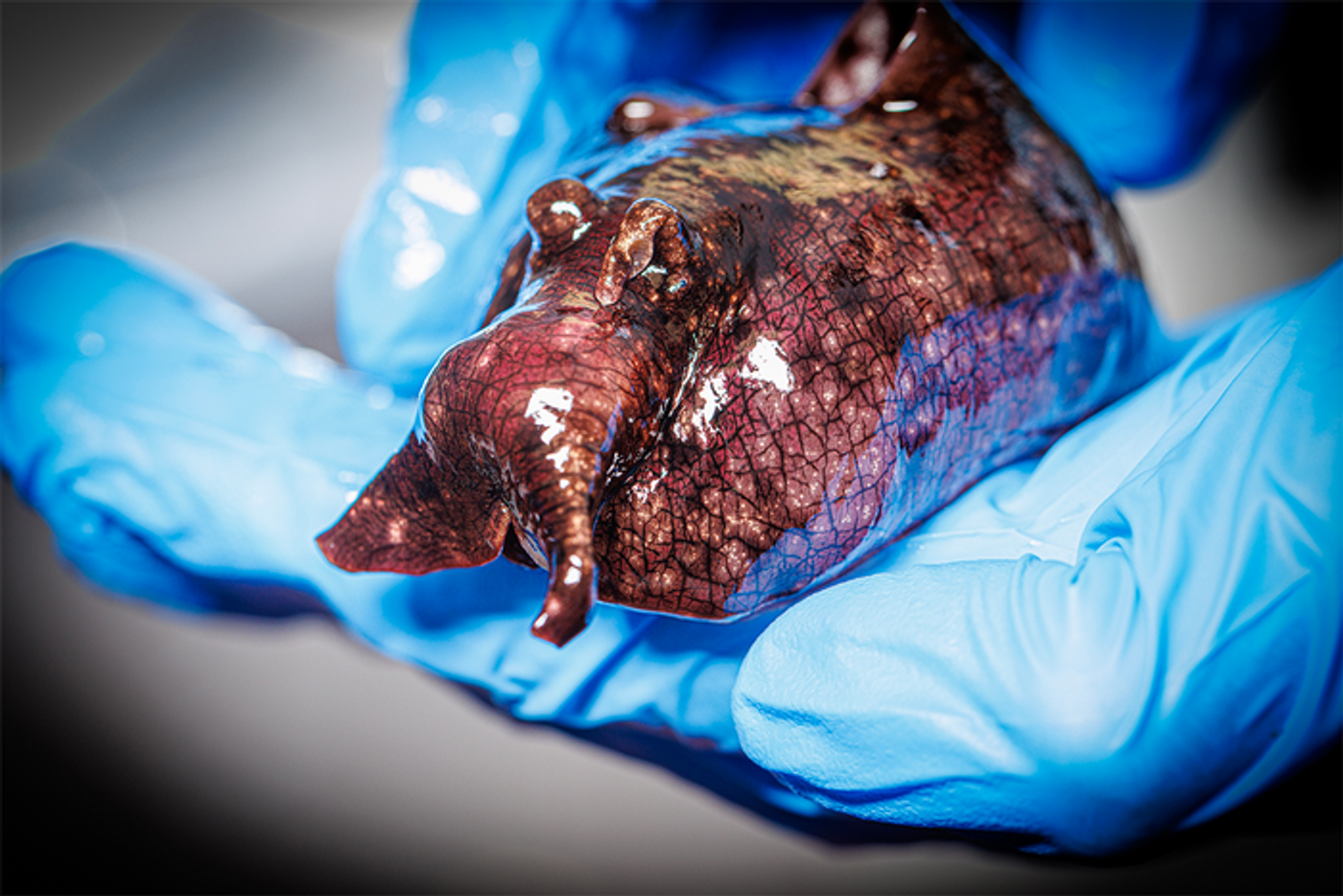Biomolecular Tweaks Can Activate Neurons
A team of researchers from the University of Nebraska used a sea slug to recently examine how neurons can be activated through biomolecular tweaks that was essentially discovered by accident during an investigation of peptides, which are short chains of amino acids responsible for transmitting signals between cells, including neurons.
A species of sea slug exmained for the study being held by study co-author, Dr. James Checco. (Credit: Craig Chandler | University of Nebraska–Lincoln)
In chemistry, amino acids are viewed as having two mirror-image sides known as L and D, which are two forms of a cell that feature the same atoms, and these forms are often referred to by chemists as being the left and right hands of a molecule. While the L side has often been observed as being more common, and almost the default side in peptides, when an enzyme changes from an L to a D, it can go from a therapeutic (good) molecule to a toxic (bad) molecule.
For the study, the researchers used a sea slug to examine change between an L and a D in a single amino acid, and discovered that certain neurons can be activated, which has implications for how the brain or nervous system regulates how cells communicate with one another, also known as labyrinthine.
“We’ve discovered a new way that biology works,” said Dr. James Checco, who is an assistant professor of chemistry at Nebraska, and a co-author on the study. “It’s nature’s way of helping to make sure that the peptide goes to one signaling pathway versus the other. And understanding more about that biology will help us to be able to take advantage of it for future applications.”
This study builds off a years-long fascination by Dr. Checco involving neuropeptide signaling, specifically pertaining to D-amino acids activating neuron receptors within sea slugs. At the time, Dr. Checco discovered that specific receptor acted like an on/off switch as it flipped from L to D, but only when the peptide contained the D-amino acid.
In follow-up studies, Dr. Checco discovered a second such receptor, only this one responded not just to a single D-amino acid, but an all L-amino acid, as well, although he found the receptor was more receptive to smaller amounts of the all L-amino acid, which equated to more of a dimmer than an on/off switch as found in the previous study.
“We were left wondering: Is this the whole story?” said Dr. Checco. “What’s really going on? Why make this D molecule if it’s even worse at activating the receptor?”
For the current study, the researchers examined if other sea slug receptors were equally sensitive to the D-containing peptide as examined in the previous studies. Their findings indicated one such receptor responded positively to the D-amino acid peptide than the whole L-amino acid.
“You can see a pretty dramatic shift,” said Dr. Checco, “where now the D is, in fact, much more potent than the L at activating this new receptor.”
Neurotransmitters within the central nervous system are responsible for sending signals between receptors, with the best-known in humans being serotonin and dopamine. But while such neurotransmitters within animals are much more complex, Dr. Checco notes they could evolve equally.
Study authors Cole Blasing (left), James Checco (center), and Baba Yussif (right). (Credit: Craig Chandler | University of Nebraska–Lincoln)
“These sorts of communication processes need to be very, very highly regulated,” said Dr. Checco. “You need to make the right molecule. It needs to be released at the right time. It needs to be released at the right site. It needs to degrade, actually, in a certain amount of time, so that you don’t have too much signaling. So, you have all this regulation and now this is a whole new level of it.”
Going forward, the researchers will continue to examine how the whole L-amino acid and D-amino acid each activate receptors in different ways, and with varying cellular responses, as well, along with the team continuing to search for eligible receptors.
“This is one receptor system, but there are others,” said Dr. Checco. “So, I think we want to start to extend and discover new receptors for more of these peptides, to really get a bigger picture about how this modification influences signaling and function. Where I really want to go long-term with this project is to get a better idea, across all of biology, of what this modification does.”
What new discoveries will researchers make about how amino acids affect neurotransmitters in the coming years and decades? Only time will tell, and this is why we science!
Sources: Proceedings of the National Academy of Sciences, MedlinePlus, Nebraska Today
As always, keep doing science & keep looking up!










